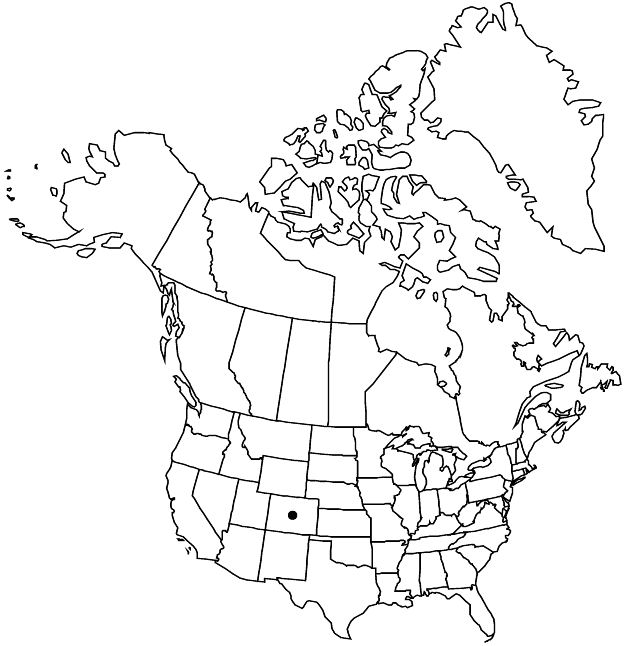Mentzelia densa
Pittonia 3: 99. 1896.
Plants biennial, bushlike. Stems solitary, decumbent to erect, straight; branches along entire stem, distal or proximal longest, antrorse, straight or upcurved, proximal decumbent; hairy. Leaves: blade 32–86 × 5.8–15 mm, widest intersinus distance 1.7–5.2(–7.1) mm; proximal oblanceolate to elliptic, margins dentate to pinnate, teeth or lobes 6–12, perpendicular to leaf axis, 1.2–6.3 mm; distal elliptic to lanceolate, base not clasping, margins dentate to pinnate, teeth or lobes 4–10, perpendicular to leaf axis, 1.8–5.2 mm; abaxial surface with simple grappling-hook, complex grappling-hook, and occasionally needlelike trichomes, largest trichomes without pearly white bases, adaxial surface with simple grappling-hook and needlelike trichomes. Bracts: margins entire or toothed. Flowers: petals golden yellow, 14.2–19.8 × 3.8–6.5 mm, apex acute to rounded, glabrous abaxially; stamens golden yellow, 5 outermost petaloid, filaments narrowly spatulate, slightly clawed, 12–18.1 × 2.7–4.8 mm, with or without anthers, second whorl with anthers; anthers straight after dehiscence, epidermis smooth; styles 8.3–11.1 mm. Capsules cylindric, 12.2–18 × 4.3–8.3 mm, base tapering, not longitudinally ridged. Seeds: coat anticlinal cell walls wavy, papillae 7–17 per cell. 2n = 20.
Phenology: Flowering Jun–Aug.
Habitat: Moist canyon walls, lower talus slopes, gravelly and sandy soils.
Elevation: 1600–2400 m.
Distribution

Colo.
Discussion
Mentzelia densa is known only from Chaffee and Fremont counties. It is in the Center for Plant Conservation’s National Collection of Endangered Plants.
Selected References
None.